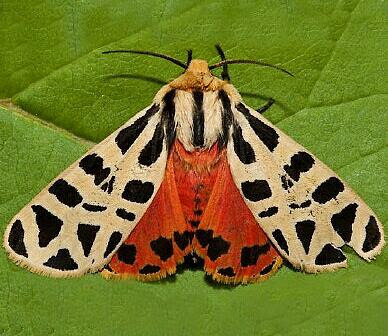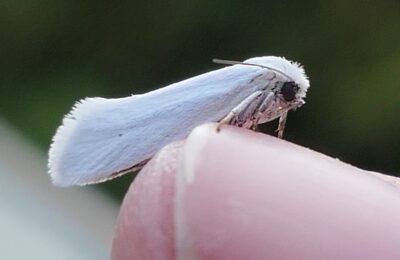
©Harvey Schmidt
Moths as Pollinators
Typically, people love butterflies and dislike the spooky moths that gather around our lights at night. Butterflies and moths are actually part of the same family, Lepidoptera, and moths outnumber butterflies 10 to 1. There are some behavioral and physical differences between the two, like the feathered antennae on moths compared to the club-like antennae found on butterflies. A common misconception is that all moths are all drab while butterflies display bright colors. Although moths are typically pale or drab in color, there are brightly colored species. On the flip side, there are pale and drab-colored butterflies.
Moths are important pollinators for flowers that open at night, just like bats. Flowers that attract night pollinators tend to be pale or white to reflect the moonlight. When most people think about moths, the pale, night-time species usually come to mind. But not all moths are nocturnal! These pollinating powerhouses are also important for flowers that are only open in the day.
Yucca and Moths
Plants and moths have evolved together over time. A great example of this is the tiny yucca moth. Female yucca moths gather pollen from yucca plants, forming a ball of pollen with their specially adapted mouthparts. Yucca relies on the female yucca moth to force the ball of pollen into the female part of the flower. Then, the female yucca moth inserts eggs into the flower. The yucca gets pollinated, the eggs are protected by the flower, and the caterpillars will have seeds to eat.
Teaching Kids About Moths as Pollinators
To celebrate and learn about moths with kids, try printing out some pages from this moth coloring book! You can also make a paper moth or go mothing.

©Kaitlin Haase
Sources
Forest Service
Xerces
Live Science
Pollinator Partnership





